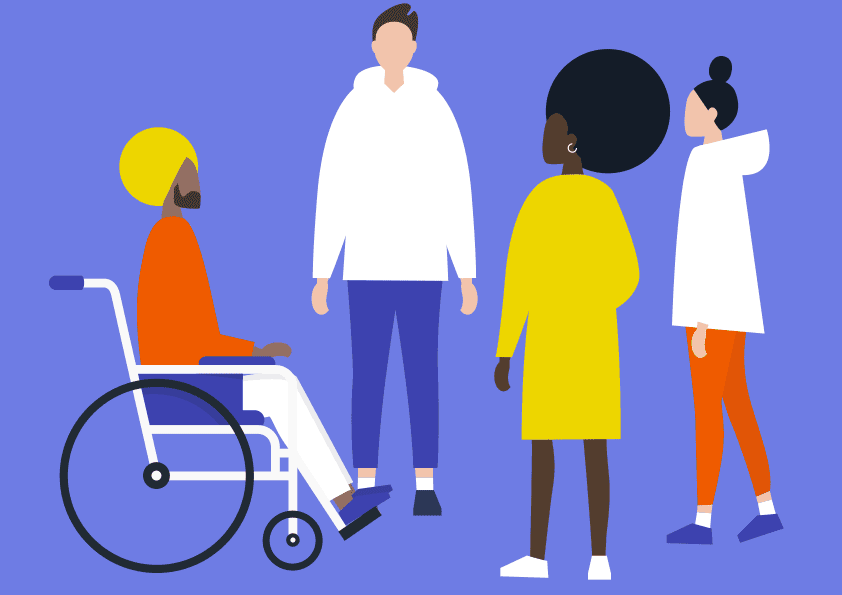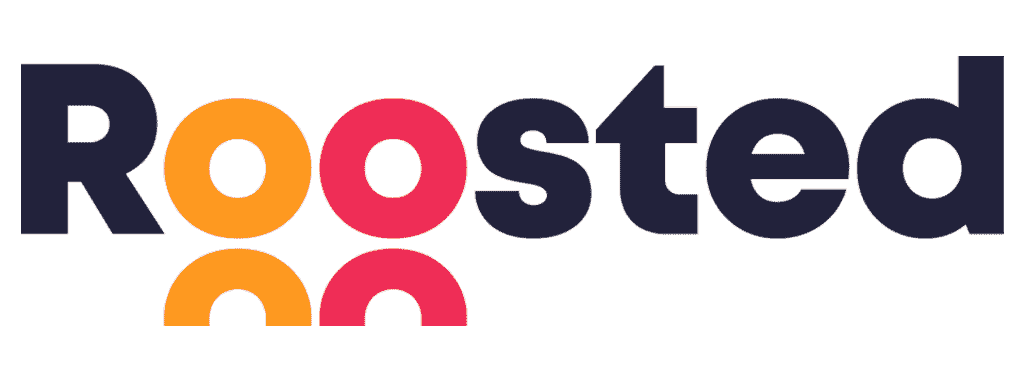An Event Planner's Guide to Inclusive Events
This means staying compliant with ADA law and ensuring a truly accessible event. Accessibility starts before the event and continues after.

Event Planning and Accessibility
As an event planner you likely want all guests to have a great experience at your events; afterall executing an event that your client's love is what you love to do. However, for those without disabilities, it can be easy to unintentionally overlook the needs and experiences of guests who may require additional accommodations in order to fully partake in the event.
When planning an upcoming event it’s essential to account for the experience of all participants - this means ensuring guests with disabilities can participate fully. Everyone who attends should feel welcome and be able to enjoy the event as intended. And accessibility for all is not only an important part of an event planner’s job -- it’s also required by law.
What is “accessibility” and what does it mean for events?
The Americans with Disabilities Act (ADA) § 36.203(a) states that “A public accommodation shall afford goods, services, facilities, privileges, advantages, and accommodations to an individual with a disability in the most integrated setting appropriate to the needs of the individual.”
All public accommodations and public events are legally required to meet ADA standards. It’s important to note that accessibility is more than meeting standards for building layouts, ramps, and elevators - something all of your venues should be compliant on. A truly inclusive event provides “full and equal enjoyment” for all individuals; which means everything from the event registration processes, website design, and pre-event communications should be built with accessibility in mind. Furthermore, it is essential to have a trained staff that understand disability laws and etiquette.
What are types of disabilities that an event planner should plan for?
There are many different types of disabilities. There are disabilities with obvious accommodations (a person in a wheelchair requires access to a ramp), but there are also invisible disabilities that are less obvious but still require accommodation. Here’s a breakdown of types of disabilities to consider when planning:
-
- Mobility Issues: This category includes wheelchair users, as well as, people who use crutches, canes, walkers, braces, or artificial limbs. It also includes those who walk with difficulty and those who have gait or balance issues.
- Visual Disabilities: This category includes people with partial vision or total vision loss. They may use a cane or a guide animal.
- Hearing Disabilities: This category includes people with total deafness or partial hearing loss. Many rely on sign language or speech-reading (or a combination) and some people with hearing disabilities may use service animals to alert them to sounds.
- Other Hidden Disabilities: There are many other disabling conditions that are not apparent from an individual’s outward appearance. Hidden disabilities include, but are not limited to, chronic pain, autoimmune disorders, cognitive conditions, PTSD, seizure disorders, asthma, and Multiple Chemical Sensitivities (MCS).
- Mobility Issues: This category includes wheelchair users, as well as, people who use crutches, canes, walkers, braces, or artificial limbs. It also includes those who walk with difficulty and those who have gait or balance issues.
It’s important to keep different types of potential disabilities in mind when planning for an event. Account for mobility issues with the layout and design of the event, keep in mind visual and hearing disabilities when creating the website and registration process. Remember that not all disabilities are obvious so be prepared to make reasonable accommodations upon request.
The best way to ensure you are accommodating all is to establish a clear process to allow for accommodation requests to be made. This can be done by adding space on the registration form allowing attendees to make requests for assistance, or by including a link in the registration confirmation email. Your request form should include checkboxes for attendees’ accommodation requests and provide a text box for them to indicate any specific needs.
If the event does not require pre-registration, include an accessibility statement with contact information so that guests know where to send accommodation requests. Be sure to respond to inquiries promptly. Remember the person with the disability is the best person to ask when determining which type of service or aid will be most helpful.
What is required by law for a public event?
-
- Proof of disability is not required. No person is required to show proof of their disability—nor should they be asked for proof. This includes people who request accommodations, purchase tickets for accessible seating, attend with a service dog, or have an invisible disability. Your staff should be well-trained to NOT ask illegal questions about a person’s disability.
- Reasonable accommodations must be made upon request. A reasonable accommodation is an adjustment to the environment of an event that allows full participation for people with disabilities. This includes: providing wheelchair access, allowing service animals, providing sign language interpreters, offering accessible seating, and providing equal access to the event.
For ticketed events with assigned seating, the organizer can not request proof of a disability for accessible seating. Tickets for accessible seats must be sold at the same time, at the same price, and via the same methods as non-accessible seating. - Access for service animals is mandatory. Public venues and public events are required to allow access for service animals. By law, a service animal can be a dog or miniature horse that assists a person with a disability by performing one or more tasks related to their disability. A service animal is NOT considered a pet and must be admitted even if there is a “no pet” policy. The ADA states that attendees or staff with allergies or a fear of dogs are not a valid reason to turn away a service dog team.
Be sure to properly train your event staff on the rules regarding service animals. There are (legally) only two questions that staff may ask a person with a service animal: Is this a service animal that is needed for the person’s disability? AND What task is this animal trained to perform? Staff may not ask what the person’s disability is. There is no such thing as an official service dog registration and staff may not ask for any kind of paperwork on the dog or the dog’s training.
Keep in mind that service animals must be housebroken and under the control of a handler at all times. If a dog is acting aggressive, not housebroken, or not under the control of their handler you can ask the person to remove the animal. Also, remember assistance animals are only allowed where event-goers are allowed. If the attendees are not allowed in the kitchen, the service dog and handler would not require access either. - The venue must be accessible. The ADA requires all buildings and facilities that are open to the public for the event to be accessible. This includes temporary structures - such as art fair booths, pop-up tents, temporary bathrooms, and food stands. If you are utilizing an existing venue you’ll save time and money if you ensure it is already compliant with the ADA.
Ensure that designated parking spaces are provided for those who need them. If your venue does not include ADA parking, temporary parking spaces for the event can fulfill ADA requirements. An accessible entrance must be provided and access to the building should feature a cut curb or level access from the parking area. An alternative entrance with a temporary ramp may be an acceptable solution if the main entrance does not meet accessibility standards.
- Proof of disability is not required. No person is required to show proof of their disability—nor should they be asked for proof. This includes people who request accommodations, purchase tickets for accessible seating, attend with a service dog, or have an invisible disability. Your staff should be well-trained to NOT ask illegal questions about a person’s disability.
How can you ensure an inclusive environment from the start?
1. Ensure your website is accessible.
An accessible website allows all attendees access to the same event information and registration. As a bonus, an accessible website often ranks higher in SEO because the structure is easier for search engines to crawl.
Some website tips to ensure accessibility:
-
- To make your website easy to read increase the contrast between background and text, and use large, clear fonts.
- Provide larger buttons and include plenty of negative space to aid people with low vision or mobility impairments. (This also tends to be more pleasing to the eye).
- Caption videos or provide transcripts.
- Get rid of your CAPTCHA. Yeah, I know, spam sucks. But a CAPTCHA is not accessible for people for those with vision issues or disabilities.
- Many guests with visual disabilities use software that auditorily “reads” out web content as they navigate. You can help this software by using predictable and clear site headers, descriptive navigation and link buttons (instead of “Click Here”, use “Download registration form”), including text descriptions for images, and avoid using graphics to replace text.
- Offer a clear accessibility statement on your website and include this information on the website’s FAQs.
2. Build accessibility into your pre-planning.
Executing an inclusive event will be much easier if you build accessibility guidelines into your pre-planning process. Start by including venue accessibility and ADA compliance measures in your standard event planning checklist. Create a system for tracking ADA accomodation requests; these can be tracked alongside other general accommodations within your event planning software.
Ensure that you have accessibility information built into your pre-event communication plan. This should include reminding attendees to submit accessibility requests in the communications leading up to the event. When you standardize and create processes that account for accessibility, creating inclusive events will be much less challenging and much more intuitive going forward.
3. The way you word things matters.
A person is not their disability and the language we use should convey that. In all written communication, on your website, and in-person emphasize the person rather than the disability. What does this look like in practice? When referring to attendees with disabilities use Person-First Language. Avoid calling someone by their condition; say “a person with a disability” rather than “a disabled person.”
There are exceptions. Some people with disabilities prefer Identity-First Language. This is true for some members of the Deaf community, who consider deafness part of their identity. However, not all Deaf or individuals with disabilities feel this way. If you are unsure, ask the person for their preference.
In closing...
Planning events with accessibility in mind minimizes the potential for last-minute changes (which can come with additional costs for your client) and shields yourself from potential ADA complaints. When you keep all guests in mind during the event prep, you’ll be better prepared to support requests as they come in rather than scrambling at the last minute. Remember, inclusive events start long before a person registers to attend or enters the venue. Use our guide to seamlessly work inclusivity into all of your upcoming events.
While we know event planning is not easy (and there are always a ton of moving parts), by thoughtfully building accessibility and inclusivity into your pre-planning you can ensure that you remain compliant with ADA law. More importantly, we believe that addressing accessibility enhances the experience of all participants at your events.
While you’re busy planning your next big event, let us worry about scheduling and payroll so you can focus on what matters. Use Roosted to make managing staffing logistics simple; saving you time and money. We can help manage staff and event scheduling, track employee performance metrics, utilize time tracking reports, and more. Contact a Client Success Engineer for more information on how we can support your business.
